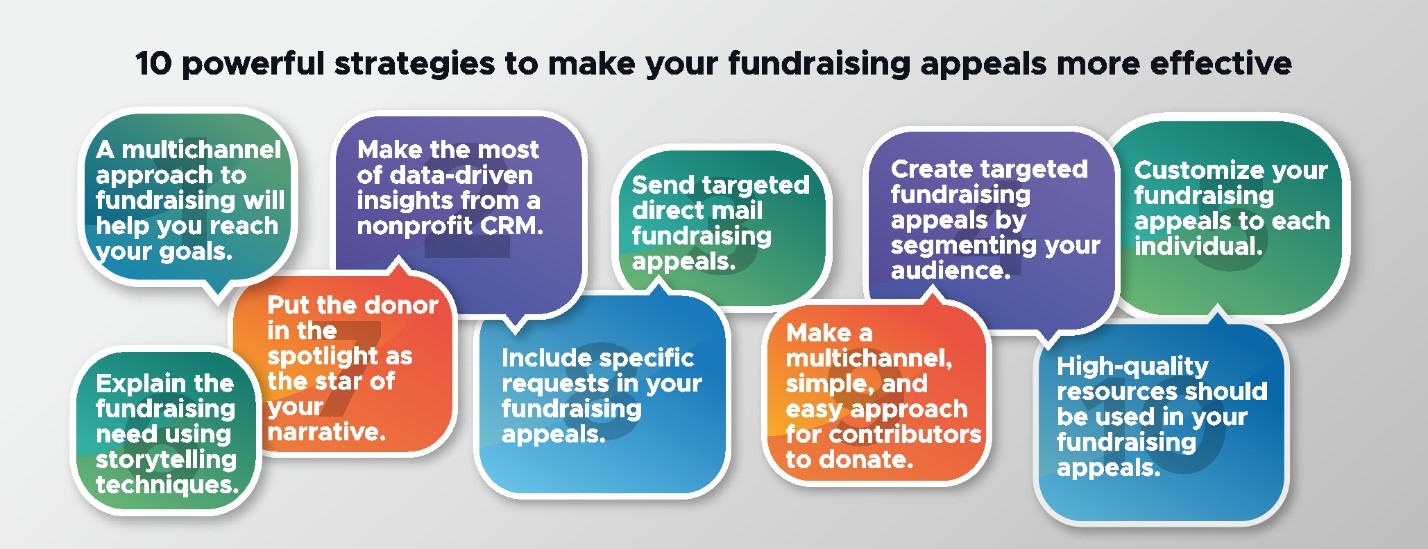Introduction
Nonprofit fundraising isn’t a one-size-fits-all approach. Different donors have different motivations, preferences, and giving capacities, so it’s essential to craft messaging and engagement strategies that resonate with each donor segment. By creating relevance, nonprofits can strengthen donor relationships, boost contributions, and build long-term support.
This guide will explore how to tailor your messaging, engagement strategies, and appeals to connect with different types of donors, ensuring your fundraising efforts remain relevant and effective.
1. Understand Your Donor Segments
The first step in creating relevance is identifying and understanding different donor types. Each donor has unique motivations for giving, preferred communication channels, and levels of engagement.
Common Donor Segments:
✅ Major Donors – High-net-worth individuals who make significant contributions.
✅ Recurring Donors – Supporters who give on a regular basis (monthly, quarterly, annually).
✅ Corporate Donors – Businesses or organizations that contribute financially or through sponsorships.
✅ Millennial & Gen Z Donors – Younger donors who prioritize impact, social justice, and digital engagement.
✅ Boomer & Gen X Donors – Older generations who prefer direct mail, personal connections, and legacy giving.
✅ Peer-to-Peer Fundraisers – Donors who raise funds through their personal networks and social media.
Why It Works:
Segmenting donors allows nonprofits to craft personalized messaging and appeals, increasing engagement and donations.
2. Tailor Your Messaging to Each Donor Type
Once you understand your donor segments, customize your messaging to align with their values and preferences.
How to Tailor Messaging:
✅ Major Donors:
- Highlight big-picture impact and exclusive opportunities.
- Use personalized communication (one-on-one meetings, private events).
- Showcase naming opportunities (e.g., scholarships, buildings).
✅ Recurring Donors:
- Emphasize the importance of sustained giving (e.g., “Your monthly gift helps 10 children attend school every month”).
- Provide impact updates regularly.
- Offer loyalty perks (exclusive newsletters, behind-the-scenes content).
✅ Corporate Donors:
- Highlight corporate social responsibility (CSR) benefits (brand exposure, tax deductions).
- Offer employee engagement opportunities (volunteering, matching gifts).
- Create custom sponsorship packages based on company values.
✅ Millennial & Gen Z Donors:
- Use digital storytelling (videos, social media, influencer partnerships).
- Focus on transparency and real-time impact.
- Encourage peer-to-peer fundraising and crowdfunding participation.
✅ Boomer & Gen X Donors:
- Use traditional communication channels (direct mail, phone calls, in-person events).
- Emphasize legacy giving and estate planning.
- Share historical impact stories to build trust.
Why It Works:
Customized messaging makes donors feel valued and understood, increasing the likelihood of continued support.
3. Diversify Engagement Strategies
Different donors prefer different engagement methods, so offering a mix of digital, personal, and community-driven experiences is essential.
Engagement Tactics by Donor Type:
✅ Digital Strategies (Best for Millennials, Gen Z, and Peer-to-Peer Fundraisers):
- Use social media campaigns (Instagram, TikTok, LinkedIn).
- Offer text-to-give and mobile donations.
- Host virtual events and live-stream fundraisers.
✅ Personalized Strategies (Best for Major Donors and Corporate Sponsors):
- Arrange VIP donor appreciation events.
- Offer exclusive one-on-one meetings with leadership.
- Provide custom impact reports showing how their donations are used.
✅ Traditional Strategies (Best for Boomers & Gen X Donors):
- Send personalized direct mail appeals.
- Organize in-person fundraising galas and community events.
- Offer planned giving options (wills, estate gifts).
Why It Works:
Using a multi-channel approach ensures that donors engage in ways that feel comfortable and meaningful to them.
4. Highlight Impact & Transparency
Donors want to see the real-world results of their contributions. Providing transparent updates on how funds are used helps build trust and relevance.
How to Demonstrate Impact:
✅ Share success stories (videos, testimonials, case studies).
✅ Provide financial transparency (breakdown of how funds are allocated).
✅ Send regular impact reports via email, social media, or direct mail.
✅ Show real-time progress (e.g., fundraising goal thermometers).
Example:
“Thanks to your donations, we provided clean drinking water to 500 families this month! See the impact here: [Video Link]”
Why It Works:
When donors see tangible results, they are more likely to stay engaged and contribute again.
5. Offer Personalized Appreciation and Recognition
Donor appreciation is key to maintaining long-term relationships. Recognizing contributions in a way that aligns with donor preferences makes them feel valued.
Recognition Ideas by Donor Type:
✅ Major Donors:
- Personal thank-you letters or phone calls from leadership.
- Naming opportunities (e.g., scholarships, programs, facilities).
✅ Recurring Donors:
- Exclusive newsletters with behind-the-scenes updates.
- Special shoutouts on social media.
✅ Corporate Sponsors:
- Featured spotlights in press releases and social media.
- Branding opportunities at events.
✅ Millennials & Gen Z Donors:
- Public recognition through digital badges, social media, and gamification.
- Personalized video thank-yous.
✅ Boomers & Gen X Donors:
- Handwritten thank-you notes.
- Invitations to exclusive appreciation events.
Why It Works:
Tailored recognition encourages continued support and strengthens donor loyalty.
Conclusion
Relevance to Appeal to Different Donors ,Creating relevance in nonprofit fundraising requires a deep understanding of donor segments, personalized messaging, diverse engagement strategies, transparency, and meaningful appreciation. By tailoring your approach, you can strengthen donor relationships, increase engagement, and maximize fundraising success.
With these strategies, your nonprofit can effectively connect with different types of donors, ensuring long-term impact and support for your mission


